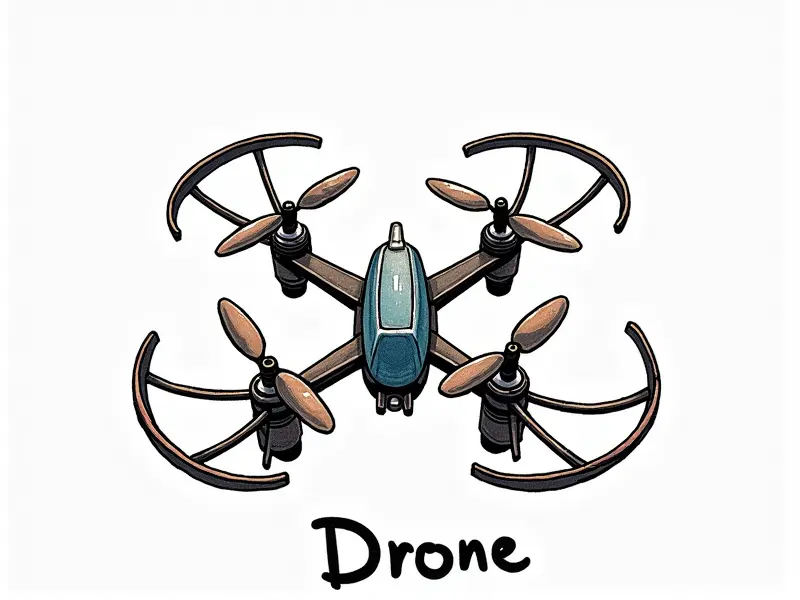What does efl mean in RC planes?

EFL, or Effective Flying Length, is a crucial concept in the world of remote control (RC) aviation that significantly influences an aircraft's performance and stability. This article aims to demystify EFL for both novice and experienced RC pilots, providing essential insights into its role in designing and flying model airplanes.
Understanding EFL in RC Aviation
EFL refers to the effective length of a wing when considering the installation angle of the control surfaces such as flaps or elevons. This measurement is vital for determining how aerodynamically efficient your RC plane will be during flight. By understanding and optimizing EFL, you can enhance your aircraft's performance in various flying conditions.
Decoding EFL: Essential RC Plane Term
In the context of RC planes, EFL is a key parameter that affects lift generation, drag characteristics, and overall stability. It is particularly important when designing or modifying an existing model to achieve optimal flight performance. Knowing how to calculate and adjust EFL can make a significant difference in your aircraft's behavior during takeoff, cruise, and landing phases.
Mastering EFL in Your RC Plane Build
To master EFL in your RC plane build, it is essential to understand the relationship between wing span, chord length, and control surface placement. By carefully measuring these dimensions and making necessary adjustments, you can fine-tune your aircraft's aerodynamics for better handling and stability.
Calculating Effective Flying Length
- Measure Wing Span: Start by measuring the total span of your wing from tip to tip.
- Determine Chord Length: Measure the chord length at various points along the wing's leading edge.
- Evaluate Control Surface Placement: Assess how far back or forward the control surfaces are positioned relative to the wing’s trailing edge.
Why EFL Matters in RC Aircraft Design
The importance of EFL lies in its direct impact on lift-to-drag ratios, stability margins, and overall flight dynamics. A well-calibrated EFL ensures that your RC plane can maintain consistent performance across different speeds and altitudes.
Impact on Lift Generation
An optimal EFL allows for efficient lift generation even at low airspeeds, enhancing the aircraft's ability to climb steeply or maneuver with precision.
Influence on Drag Characteristics
EFL adjustments can also reduce parasitic drag and improve aerodynamic efficiency, leading to longer flight times and better fuel economy in scale models.
Quick Guide to EFL in RC Planes
To get started with optimizing your RC plane's EFL:
- Measure Accurately: Use precise tools like calipers or rulers for accurate measurements.
- Analyze Data: Compare your measurements against established guidelines and manufacturer recommendations.
- Adjust Settings: Make incremental changes to control surface positions until you find the sweet spot that maximizes performance.
Simplifying EFL for RC Plane Pilots
EFL can seem complex at first, but with a few key concepts and practical tips, it becomes much easier to manage. Focus on understanding how each component of your aircraft contributes to the overall EFL and make adjustments accordingly.
Key Components Influencing EFL
- Wing Geometry: The shape and angle of incidence of the wing have a direct impact on EFL.
- Control Surface Placement: Positioning flaps, elevons, or other control surfaces can alter the effective length of your wings.
EFL Explained: Tips for RC Pilots
To harness the full potential of EFL in your RC plane, follow these tips:
Optimize Wing Design
Experiment with different wing profiles and configurations to find the best balance between lift generation and drag reduction.
Balancing Stability vs. Agility
Achieving a harmonious blend of stability and agility through careful EFL tuning can lead to more enjoyable and controllable flights.
Maximizing Performance with Proper EFL
To maximize performance, focus on achieving the right balance between lift-to-drag ratio and stability. This involves fine-tuning your aircraft's geometry and control surface placement based on real-world flight data.
Flight Testing and Data Analysis
- Gather Flight Data: Use telemetry systems or video footage to collect performance metrics during flights.
- Analyze Results: Compare your findings against theoretical predictions and adjust parameters accordingly.
Common Mistakes with EFL Settings in RC Planes
Misunderstanding or mismanaging EFL can lead to suboptimal performance. Here are some common pitfalls to avoid:
Inadequate Measurement Tools
Using imprecise measurement tools can result in incorrect EFL calculations, leading to poor aircraft behavior.
Oversimplifying Adjustments
Making large or abrupt changes without thorough testing and analysis can destabilize your RC plane’s flight characteristics.
EFL Adjustments for Better Flight Stability
Adjusting EFL is a critical step towards achieving stable and predictable flights. By making small, incremental adjustments based on empirical data, you can fine-tune your aircraft's performance to meet specific flying conditions.
Tuning Tips
- Start Small: Begin with minor tweaks to control surface positions before moving onto more significant changes.
- Monitor Reactions: Pay close attention to how your aircraft responds during each flight test session.
The Importance of EFL in RC Planes
In conclusion, understanding and optimizing the Effective Flying Length (EFL) is crucial for any serious RC pilot looking to enhance their aircraft's performance. By mastering this concept, you can unlock superior lift generation, reduced drag, and improved stability—leading to more enjoyable and rewarding flights.

